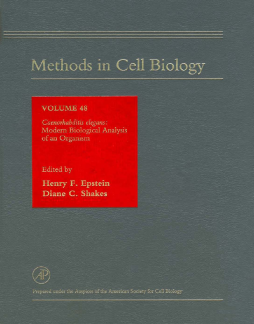
BOOK
Caenorhibditus Elegans: Modern Biological Analysis of an Organism
Henry F. Epstein | Diane C. Shakes
(1995)
Additional Information
Book Details
Abstract
The first of its kind, this laboratory handbook emphasizes diverse methods and technologies needed to investigate C. elegans, both as an integrated organism and as a model system for research inquiries in cell,developmental, and molecular biology, as well as in genetics and pharmacology. Four primary sections--Genetic and Culture Methods, Neurobiology, Cell and Molecular Biology, and Genomics and Informatics--reflect the cross-disciplinary nature of C. elegans research. Because C. elegans is a simple and malleable organism with a small genome and few cell types, it provides an elegant demonstration of functions fundamental to multicellular organisms. The discipline has greatly expanded as researchers continue to find this small soil nematode to be the model of choice for studying specific pathways, stages of development, and cell types. By directing its audience not just to tried-and-true recipes for research, but also to databases and other innovative sources of information, this comprehensive collection is intended to guide investigators of C. elegans for years to come.
First single-source book detailing explanations of current and classic C. elegans methodologies
Diversity and scope of techniques covered expected to be useful to the broadening community of C. elegans researchers for years to come
Techniques range from reverse genetics and mutagenesis, to laser ablation and electrophysiology, to in situ hybridization and DNA sequencing methods
Appendices include resource information important to the C. elegans community, including the C. elegans Genetics Center and Internet resources like the Worm Community System and ACeDB
Illustrated with more than 100 tables and figures
